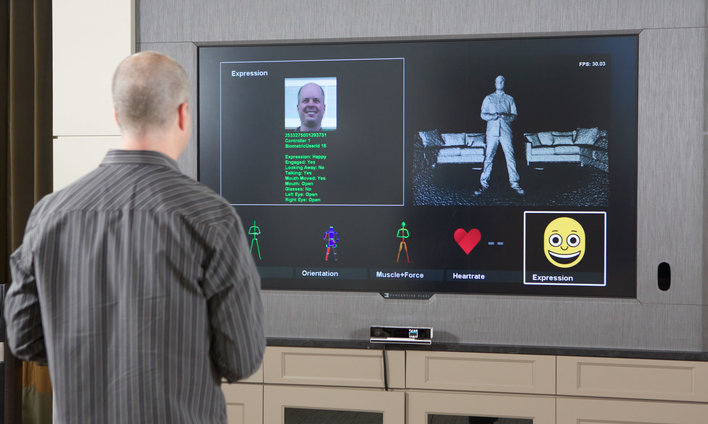One of the features Microsoft were keen to show off at the reveal of their newest console, the Xbox One, was the latest revision of their Kinect sensor, which will come bundled with every console. Letting you control your games, and the system itself through gestures and voice commands, describing the upgraded sensor as being the "latest revision" is perhaps to do it a disservice, as the new Kinect has been upgraded and improved in almost every way possible.
Kicking things off inside the new sensor is an upgraded pair of cameras, which capture video at a higher resolution for more accurate tracking. Perhaps most importantly for those of us in the UK (and basically anywhere but America), the lenses are also wide-angle, which will reduce the amount of space Kinect requires to function. According to Microsoft, the new lenses make the sensor up to "60% better" in smaller homes - although quite what "better" means remains to be seen. We'd take "functioning" at this point.
Meanwhile, on the technology side of things, Microsoft have gone to town on a number of features, although none of them as of yet have been shown as having an application in games. Through heavily upgraded sensors, Kinect can now track more joints in your body than ever before, and can even track the rotation of your wrists. Moving far beyond the capabilities of the original Kinect, the new sensor can even track your posture, the distribution of your weight, and somehow, your heartbeat. The depth sensors, meanwhile, allow Kinect to recognise your facial expressions, while the upgraded hardware also allows it to track up to six people at the same time - space allowing.

The new sensor reads out a huge amount of data about you - including your expression.
Kinect's voice control capabilities have been upgraded too, and are being marketed as a key part of the Xbox One. The menus, TV, and even some games can be able to be controlled using your voice alone, while the camera will remain always on, always listening, even when the system's switched off, as it awaits your commands. Although this does mean you're able to turn your console on by saying "Xbox On" - which will be useful for those times you can't find the controller - the reaction online, and amongst people we've spoken to hasn't been entirely positive, with concerns about privacy often being raised about the idea of an always listening camera. While Microsoft have reassured a worried public that they only listen for the phrase "Xbox On", they finished their sentence with the slightly disconcerting "we don't transmit personal data in any way, shape or form that could be personally identifiable to you, unless you explicitly opt into that." Of course, that isn't the point - people don't want data being sent, at all, whether it's personally identifiable or not - but we're imagining this will likely turn out to be a misinterpretation, and another minor blunder for Microsoft's often confusing message over the past few days.
Meanwhile, the news that the new sensor will have to be plugged in and active for the Xbox One to work at all has equally concerned players, not just because of the aforementioned privacy settings, but also because many play in rooms that are so small that Kinect simply doesn't stand a chance of functioning. If you have an Xbox One in your bedroom, for example, it doesn't really matter how wide angle the lens is - if there isn't enough room between you and the sensor, it won't even be able to begin to start tracking you, especially for games that require tracking your full body. The idea for making Kinect mandatory is that developers will be able to rely on it being there for games, and so may start to use it more - but if many are playing in spaces that really aren't suitable for Kinect, then it could just end up leading to games that people can't play at all...
With a concession to those of us with smaller living rooms thanks to the wider angle lenses, Microsoft at least seem to be going down the right path with their next-generation Kinect - but it'll be interesting to see where things go from here. If developers can harness the new features beyond fitness games, and if they can make it work when someone's sitting down, quite close to the sensor, Kinect could become a more useful part of the console that anyone could have expected.













